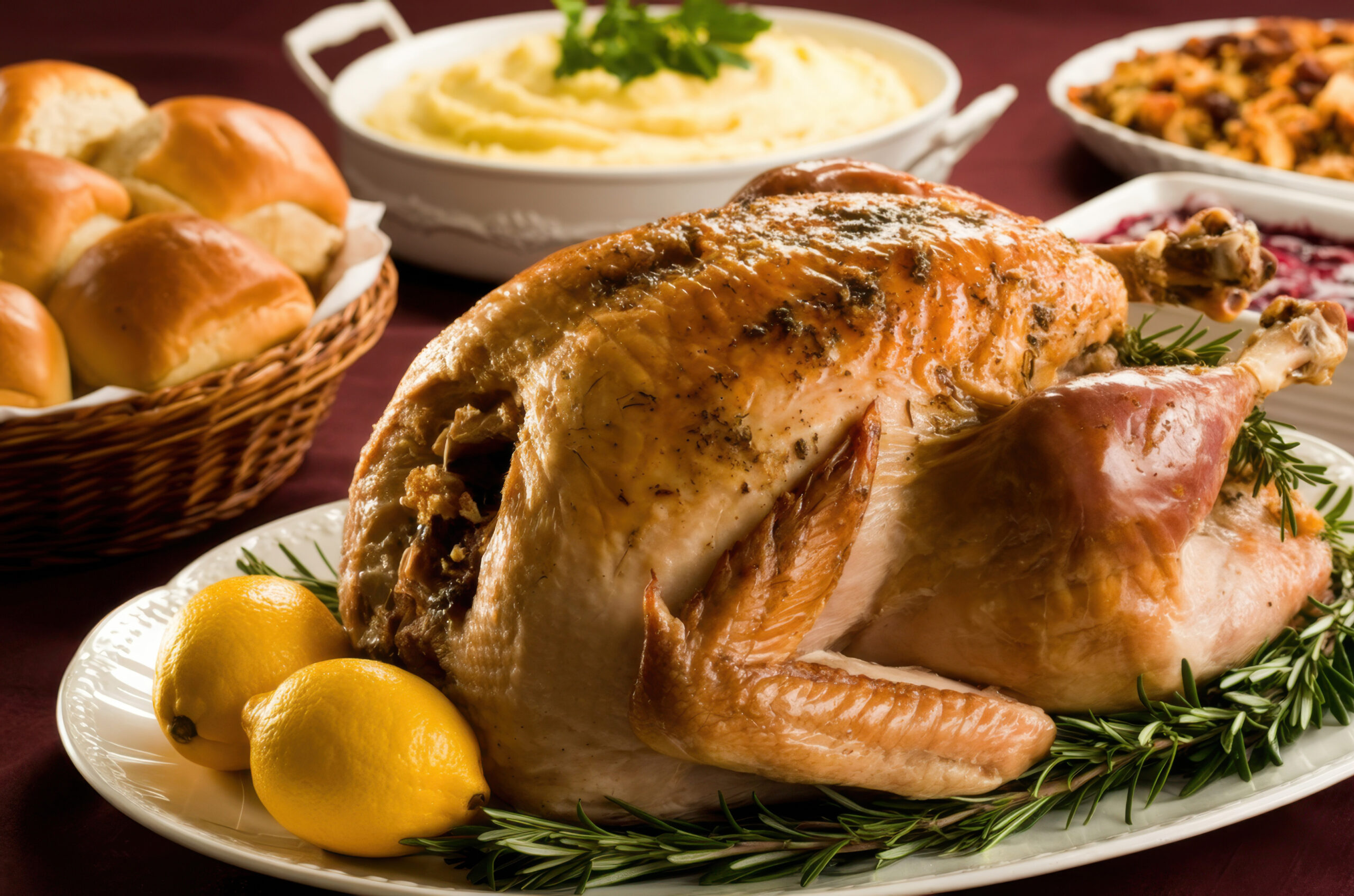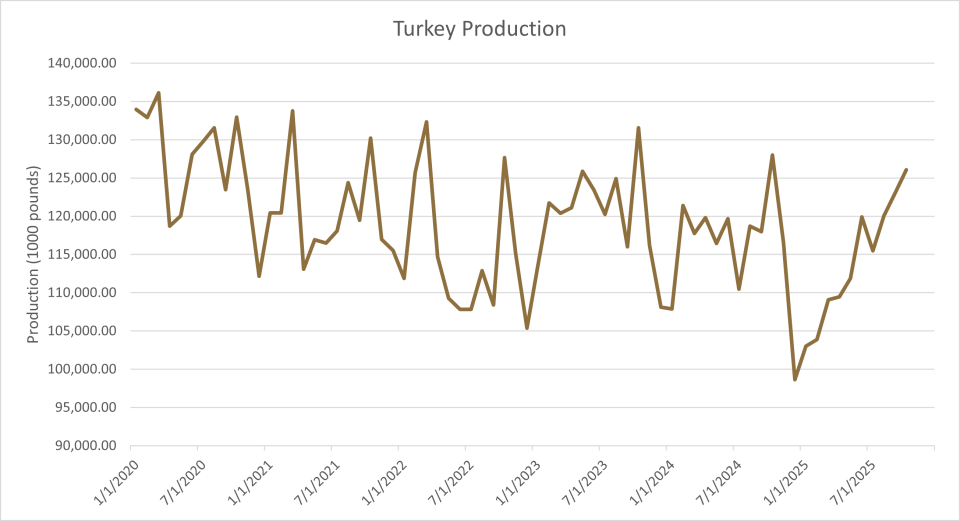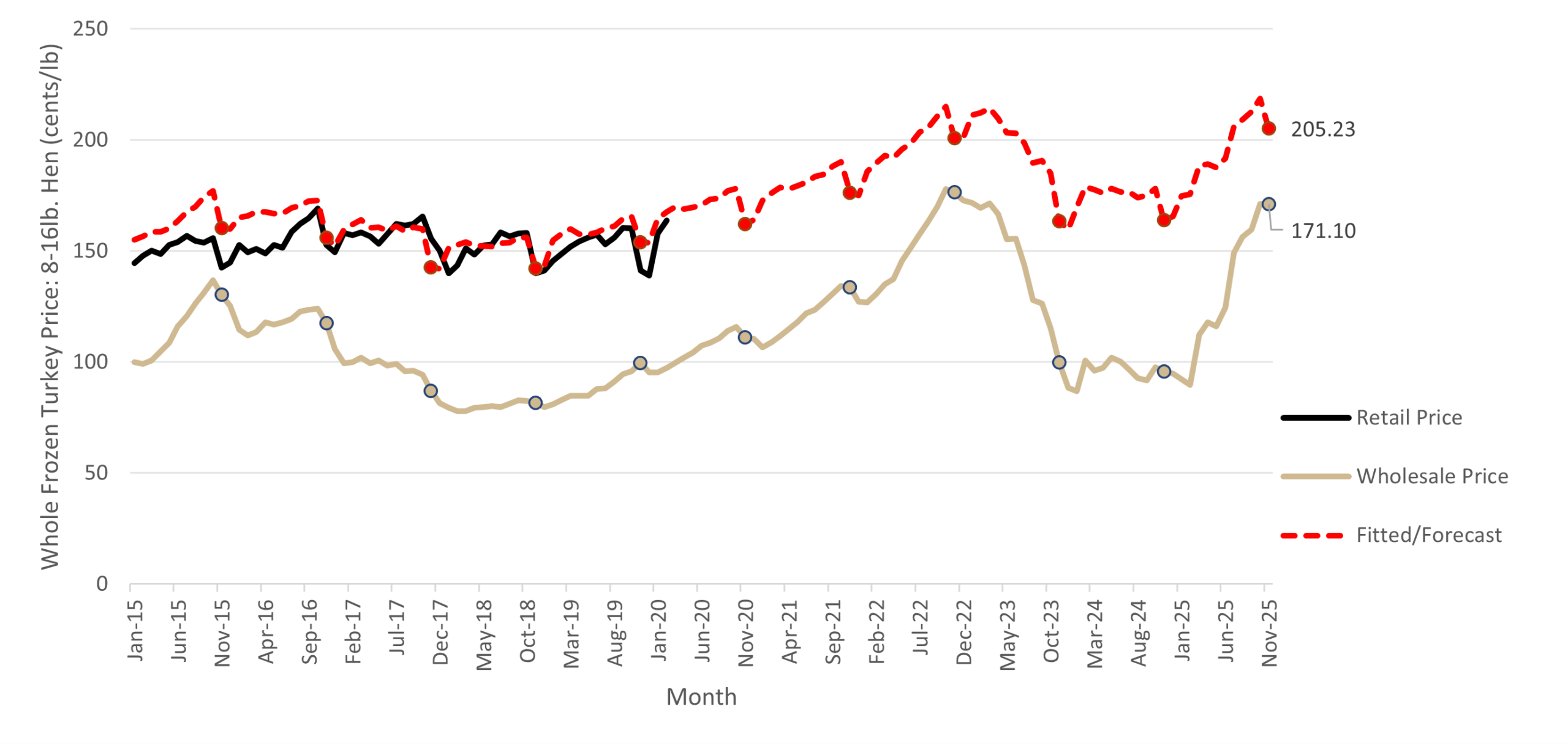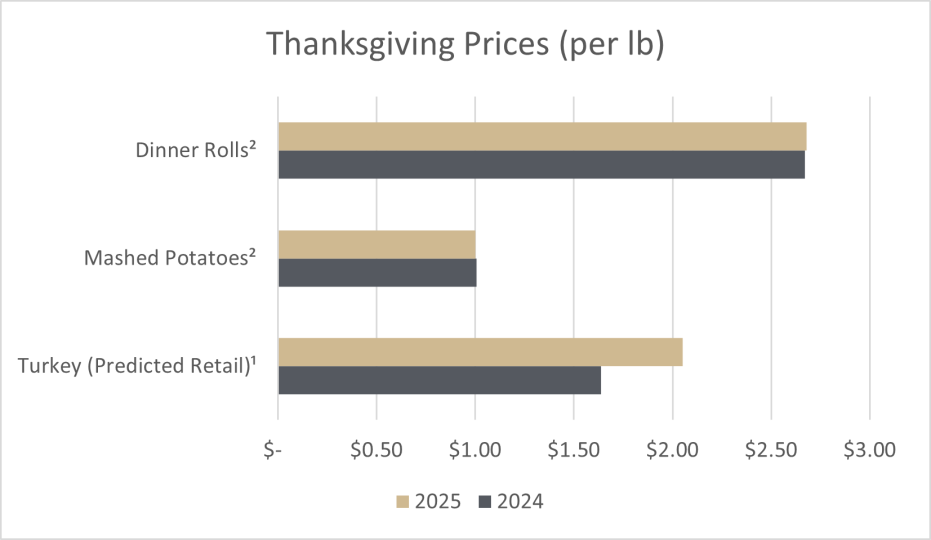As families across the country begin planning Thanksgiving gatherings, a familiar question looms: how much will this year’s meal cost? While traditions remain constant—the perfectly roasted turkey, creamy mashed potatoes, warm dinner rolls—the price tags attached to those holiday staples tell a story of market shifts and ongoing challenges in the poultry industry.
This year’s Thanksgiving centerpiece comes with a particularly hefty price increase. Wholesale turkey prices have surged 75% since October 2024, reaching $1.71 per pound in October 20251. This comes after prices dipped substantially from 2023 to 2024. This year, we are seeing the continued impacts of the ongoing battle with highly pathogenic avian influenza (HPAI) that first appeared in February 2022. This devastating disease has continued to impact poultry flocks across the United States, reducing supply and driving prices upward. (See Figure 1.) Unlike temporary market disruptions that resolve within months, HPAI has become a persistent challenge for producers.
Figure 1. Total turkey production reported from USDA AMS, January 2020 – October 2025
In the absence of publicly available data on retail turkey prices since 2020, we use the historical relationship between wholesale and retail prices to predict average retail price of a whole turkey, accounting for seasonal effects. (See Figure 2). Our model predicts an average retail price of approximately $2.05 per pound in November2 for this Thanksgiving season, which is 25% higher than a year ago. This means that a typical 15-pound turkey could cost around $31.
While we are predicting higher turkey prices on average—largely driven by the uptick in wholesale price—there’s typically a wide price range around that average. Part of this variation is driven by quality; for example, higher prices for organic or pasture raised turkeys. But retailer discounts are another big driver of variation in retail prices. Grocery retailers are competing for customers, and, in addition to turkeys, they sell everything else that you might put in your pantry. Therefore, some retailers offer significant discounts on turkeys to attract customers. For example, Walmart is currently selling whole turkeys for $0.98/lb., less than half of our predicted average price. Consumers with time to compare prices across retailers may find substantial savings this season.
Figure 2. Forecast of retail turkey prices, March 2020-November 2025 (Source: USDA Weekly National Turkey Report; USDA ERS Meat Price Spreads)
While turkey takes center stage in Thanksgiving discussions, it’s worth examining the broader food price landscape. Most recent data from the Bureau of Labor Statistics tells us that overall food-at-home prices have increased 2.7% since September 2024, a relatively modest rise compared to the inflation rates we’ve seen in recent years. However, beef prices specifically have climbed 14.7% over the past year, nearly five times the overall food-at-home inflation rate. This means consumers can expect to see higher prices for turkey alternatives, like roast beef, as beef prices reach an all-time high due to reduced herd sizes across the country.
Not everything in your Thanksgiving basket is more expensive, though. Some traditional sides offer welcome relief. Potato prices have dipped 0.5% since August 2024 and even more notably, bread prices are down 5.6% since August 2024.
Figure 3. Price of key Thanksgiving items per pound
1 Predicted retail price data from the Center for Food Demand Analysis and Sustainability
2 Price of retail products from the Bureau of Labor Statistics
These mixed trends create an interesting dynamic at the Thanksgiving table. While the main attraction costs significantly more, some of the supporting dishes actually cost less. For budget-conscious cooks, leaning into these more affordable items—perhaps a more elaborate potato dish or homemade rolls—can help offset the increased turkey expense.
As you finalize your Thanksgiving plans, remember that higher turkey prices don’t necessarily mean an unaffordable holiday. Price comparison across stores and retail bundles may matter more this year given the wide variation our forecast indicates. Flexibility regarding turkey size or even the choice of main protein can create savings that push retail prices down to the lower end of our forecast. And the lower prices on bread and potatoes offer opportunities to redirect your budget toward the elements that matter most to your family.
For more insights into food prices, consumer trends and agricultural economics, explore the Center for Food Demand Analysis and Sustainability website.
Footnotes
1. Wholesale prices used in this post are for Whole Young Hen, Basted, 8-16 lb. Grade A turkeys from the USDA AMS and through October 11, 2025.
2. Wholesale turkey data in this post are only through October 11, as November wholesale turkey data is not yet available. The October wholesale price is used as a proxy for wholesale prices in November 2025.






